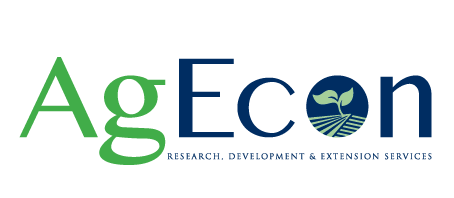Farmer climate focus - Sam Becker, Jarrah Cattle Company
/Jarrah Cattle Company’s Sam Becker runs a livestock business that includes some forage cropping. The climate and managing groundcover to ensure feed budgets are met, provides the greatest challenge for management.
Sam Becker
Banana, Qld
Location snapshot
Catchment: Lower Fitzroy Catchment
Altitude: 181 m
Enterprise: Stud Hereford, Redford and Jarrah Red cattle and forage cropping, including sorghum and oats.
Rainfall: Wet season (Oct-Mar): 78% rainfall
Cool season (Apr-Sep): 22% rainfall
Seasonal rainfall climate drivers: Banana, Qld
El Nino-Southern Oscillation (ENSO) is the key climate driver, however, ENSO impacts are very weak post-January to May.
What are your ‘go-to’ sources of climate/weather information?
BOM is a big one and we also use The Long Paddock reports supplied by DAF which allows us to see which percentiles we’re sitting in and how much groundcover we have. We also link that in with our records of past rainfall and then looking at the future rainfall as well. I also get a fair bit of information about climate change from social media to be completely honest and then when you read stuff about that and then look at your past three to five year annual rainfall, for example, we’ve been below our annual rainfall for the last five years, so, it’s looking at that to try and find trends. It’s more to find those trends to manage how heavily we stock and where we stock.
How do you consider climate in your farm management?
A big thing we do is try and link our groundcover and rainfall and look at those two things to see if we should be buying or reducing stock. That’s probably been reactive to an extent, but we have also been making decisions on the go, I guess that sort of reflects the decisions that we have made. We don’t want to start with nothing. We want to have groundcover when we go into the wet season and make sure there’s a bit of a body of feed. If there’s nothing there we would have sold. We try to de-stock before we get to that stage, or at least we keep selling off dry cattle to spread our breeders around so that we keep some level of groundcover there.
Can you share a climate success (or failure) story with us?
Probably a failure. In the last five years we were too reactive to the climate. We were selling down, but we probably weren’t doing it quick enough, so we did– particularly with one property – eat it to the ground. We sort of got trapped when the cattle became out of spec, so they became hard sell. We were definitely reactive to that. We had a set number in our heads that we knew our properties could run and we didn’t take into account the last five years with below average rainfall and then the last two which were significantly below. We still, in our minds, thought that we could run a certain amount of cattle which, in turn, lead to one property significantly suffering.
What’s your soil moisture looking like at the moment?
We’re pretty dry, as in we have had hardly any rain to date since April. So, yes, we are very dry. Not much moisture, not much protein in the soil, we do have a good grass-cover but it’s all dry feed. Because of this we are supplementing our breeding cattle with a fair bit a custom-mix dry lick that is made with our deficiencies and our country in mind.
Do you have altered management plans for the rest of the year considering La Nina has been announced?
We are definitely considering it. It’s now when we consider these trigger points we have that prompt us, depending on how much feed we’ve got, to start selling off dry cattle. This is so we can spread our breeders around so that we keep that good body of feed and then wait until rain comes before we increase our numbers. We’ve made a big effort this year to make sure we start off with good ground cover for the wet season. We definitely aren’t going to start buying in cattle thinking we are going to get good rain, we are going to wait until we’ve had decent rain, the grass has got away and then we would look to build our numbers again.
Have a farming climate story to share? Please contact us.
The co-efficient of variation (CoV) for rainfall helps understand which months are more reliable than others. The chart shows a generally reliable monsoon rainfall, with November as the most reliable month and July as the least reliable month.
El Niño-Southern Oscillation is the major climate driver in the region. An analysis of Oct-Jan rainfall shows some broad trends towards average or better in La Niña years, low rainfall years in most El Niño years and neutral years as completely random.
Developed by the International centre for applied climate sciences https://climateapp.net.au/ has some handy tools to understand the climate for your area.
A summer-dominant rainfall at Banana, Qld. An output of https://climateapp.net.au/
Tracking close to average rainfall for 2020. An output of https://climateapp.net.au/










